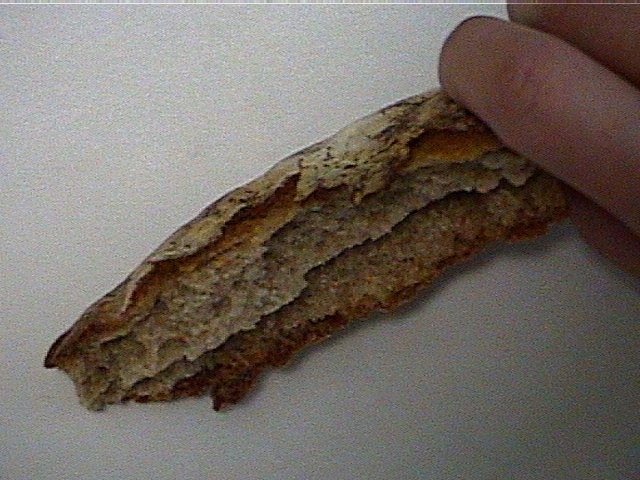|
I'd attempted to make an advanced level bread - Thom Leonard's Country French Bread from the book, ARTISAN BAKING ACROSS AMERICA,
authored by Maggie Glezer. The crust turned out superbly, extremely dark almost to the point that it looked "carmelized"
just like the Pain Poilane images I'd gloated over in my studies... but...the interior was a dismal failure. Some aeration,
but the entire loaf was inedible. I held on to it for a while thinking I might find a use for it as a door wedge, but eventually
it had to be tossed, the sourdough smell was intense! See my Trial #4 where I finally recover...
I've just
read a section from The Bread Builders by Scott/Wing - on p.68 "Very Sour Bread," which supports the newsgroup's
comments on gluten degradation.
Acidity from very sour starter causes the gluten to become swollen with water and
results in a "pungent brick" which is exactly what I had in the last two sourdough experiments. The baked loaves
had been retaining a stickiness that wouldn't bake out, no matter how long I kept the oven on (300F for ~40 minutes). It had
already been, say, 2-3 weeks since I'd begun the starter and the tang was intense. I do not mind the taste at all, but surprised
at how fast it became so tangy. I'm planning on approaching the next loaf by modifying the intensity of the sourdough by reducing
the acidity. That is, I've "diluted" the sourdough and will use the diluted form to bake my next batch - hopefully
tonite/tomorrow.
Regarding the hydration levels - I don't think I was conscious that the starter itself was a hydrating
factor (the starter was half flour/half water and somewhat soupy-thick) and by adding more water pretty much killed off whatever
structure it might have had to hold the rise.
[See supporting comment below.]

|

